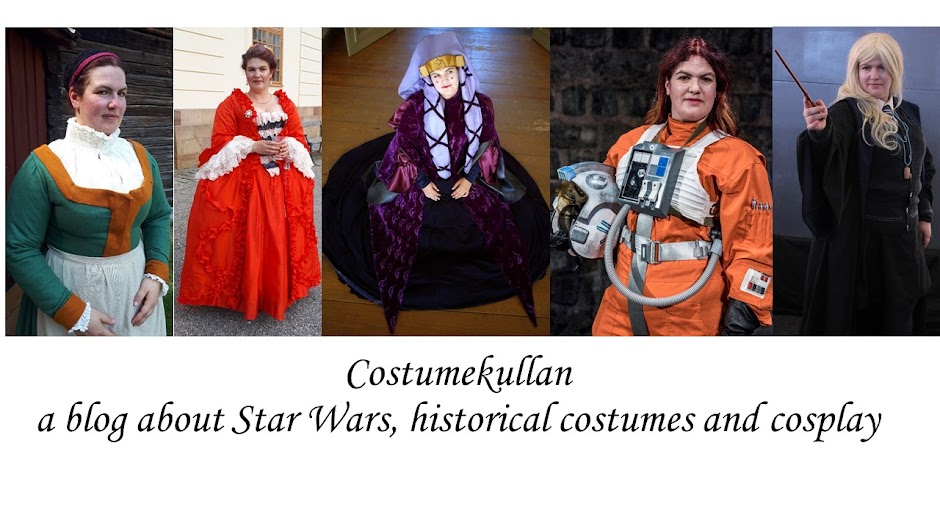 |
| A Vika costume, picture from an auction site |
The main gown is fairly basic, typical of reconstructed costumes. It's a bodice with lacing in front and the skirt is pleated and sewn on to the bodice at the waist. The gown should be go down to around mid calf, but the length of the skirt is one way of determining when a folk costume was made. There are examples of costumes from the 1960's and 1970's where the skirt barely goes down below the knees. One of the issues I want to fix on my costume is that it's too long and almost goes down to the toes.
Under the gown you wear a linen blouse, with lace around the cuffs and lace inserts on the middle of the sleeve. With the gown you wear a cap and a neckerchief. This is another thing that I like about the Vika costume. Many costumes have regulated how the cap and neckerchief should look, but in Vika they decided to keep the tradition of individual caps and neckerchiefs. The tradition comes from the fact that the neckerchief was usually a gift from your fiance, and depending on how rich or well traveled he was there was a great variety in neckerchiefs, and the cap should go with the neckerchief.
 |
| Me and my niece in 2008, she's wearing a girl's Leksand costume |
 |
| 18th century cap in a similar style |
As an unmarried woman I don't need the cap, but can wear a woven ribbon in the same colours as the ribbons to the apron, but I prefer to wear the cap, even if it's trickier to keep in place, I simply feel that the costume is more complete when worn with the cap.
The one thing I'm missing from my costume is the pocket, or loose bag. It's exactly the same shape as a 18th century pocket and embroidered. There is the hitch. I have the material for the pocket, but the stitches are so small that I've never managed to do it myself. Thankfully my older sister, who has sewn my costume, has now said that she can do the embroidery on the pocket for me, so one day I'm going to have a pocket.
There are also some other accessories for the costume. I have a wool winter shawl, white with narrow stripes of purple and green at the border. I also think that I have a simple cotton neckerchief, or at my sister has the fabric for one and she said that she might have ordered fabric for all of us at the same time. For real solemn occasions, like funerals, you can wear a white apron and neckerchief, but I don't have those.
As for things I would like to do do for the heirloom challenge. As mentioned I think my skirt is a bit on the longer side, so I would like to hem it up. I also think that the bodice is too big, I would like to turn it into a more fitted bodice. In order to do that I would need to take it apart and resew it, but I don't think it's very complicated. If I have fabric for the cotton neckerchief it would also be suitable to finish that one.

No comments:
Post a Comment